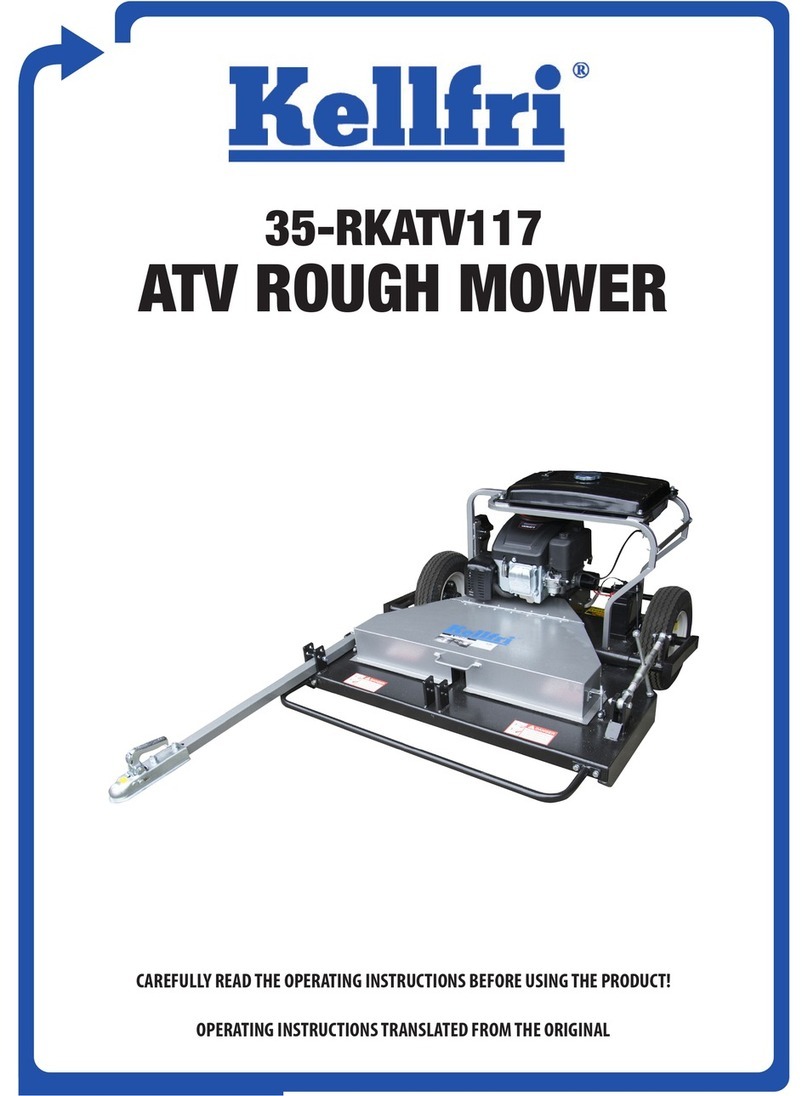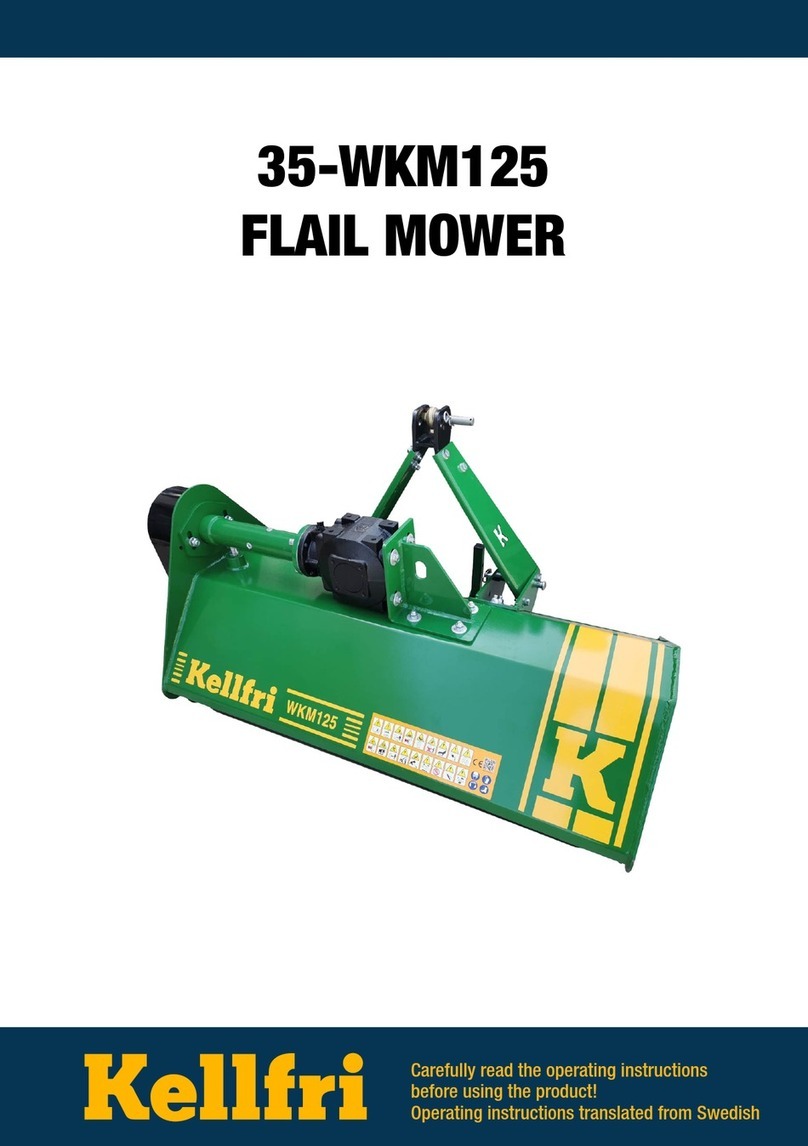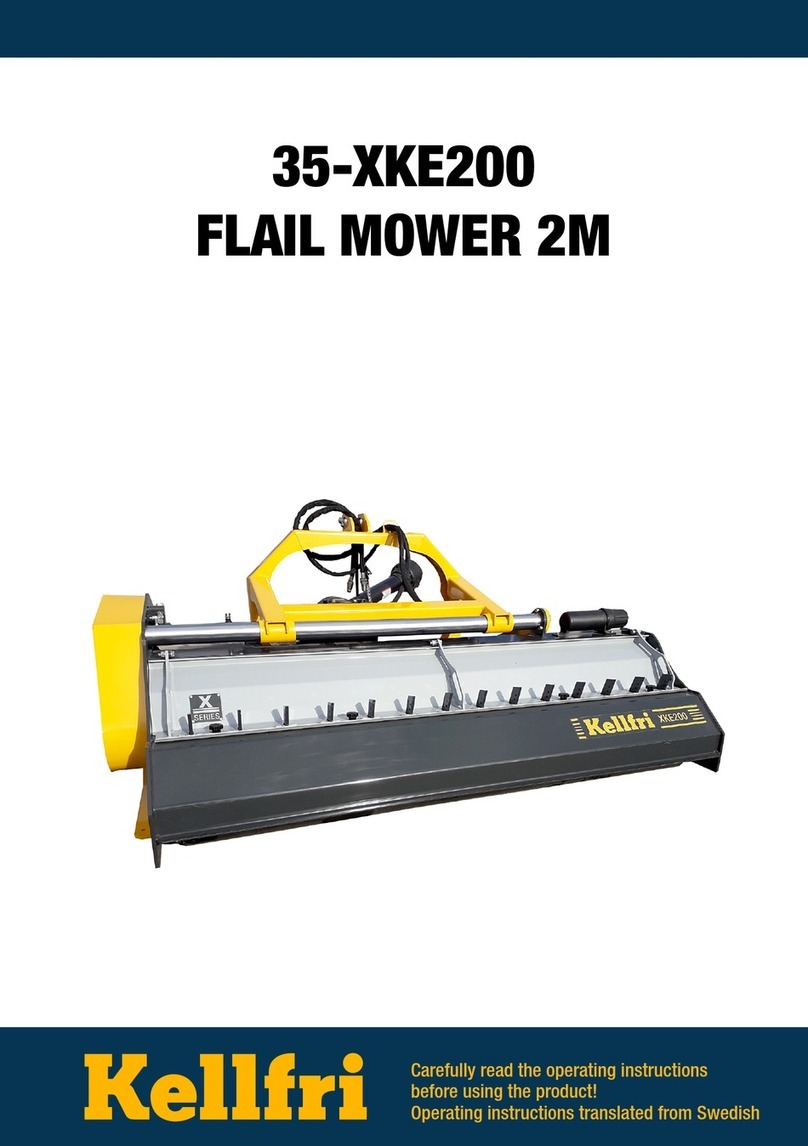
Table of Contents >>
INTRODUCTION
Thank you for choosing a product from Kellfri AB. Compliance with the general safety instructions,
operating instructions and common sense will guarantee many years of enjoyment using the
product. Kellfri’s equipment and products are aimed at self-employed farmers who have stringent
performance demands.
PRODUCT INFORMATION
The WKM195H ail mower has a working width of 1.95 m, making it practical for ailing, topping or
cutting medium-sized or large grasslands and grassed areas.
The ail mower has a ne-toothed welded counter bar in the chassis to break up the grass more
eectively.
The cutting height is adjusted by the support roller and skids. The adjustable support roller
guarantees a correct cutting height on uneven ground.The cutting height can be adjusted between
0-55 mm, enabling you to cut the grass close to the ground and thus achieve a more level result.
The grass is evened out and the remnants moulder away faster. The support roller has a scraping
iron to keep the roller free from cut material.
The front of the ail mower is tted with chain guards that adapt to the substrate and protect both
the tractor and the surroundings from stone chipping and grass spray.
The ail mower is tted as standard with hammer ails.
This ail mower is equipped as standard with hydraulic side shift adjustment, which enables you
to shift the machine to the left or right. The side shift adjustment means that you can cut at the side
of your tractor and thereby reach areas that would otherwise be dicult to reach. The hydraulic side
shift adjustment enables you to drive with just one pair of wheels in the uncut area and cut closer to
ditches, fences, etc. The maximum side shift adjustment of the machine is 294 cm to the right and
78 cm to the left from the mid-point of the tractor.
The mower has an openable ap. You open the ap when you know you are cutting or topping
ground that generates a higher ow of material. This enables you to drive freely under the same
conditions as with a closed ap and a normal ow of material. You save on fuel and reduce wear on
the belts, and you can also operate at a higher speed, as the grass does not become twisted around
the roller. The grass is also spread more evenly.
TECHNICAL DATA 35-WKH195
Length x width x height 2085 x 945 x 950 mm
Working width 1950 mm
Operating height 0 - 55 mm
Weight 398 kg
Number of ails (hammer) 28 (Adapted for Y-ails, which can be purchased additionally - not included.)
Power requirement 50 - 60 hp
Operating speed 6-12 km/h
Gearbox oil 0.7 L [Transmission oil 80W-90]
Side shift adjustment Hydraulic
RPM/ha 540
PTO drive shaft Standard
3-point linkage Cat 1 & 2



































